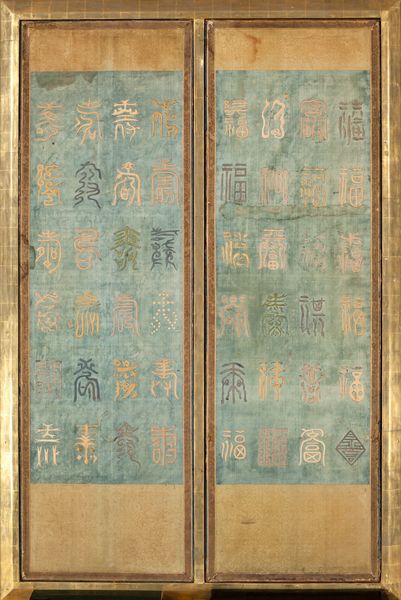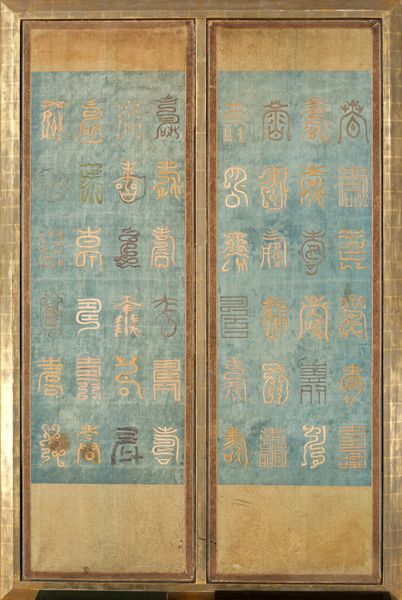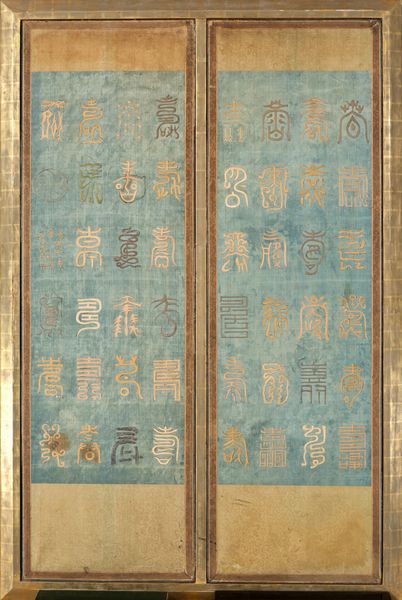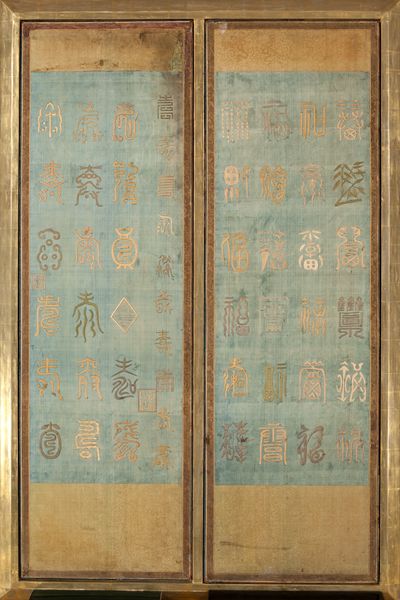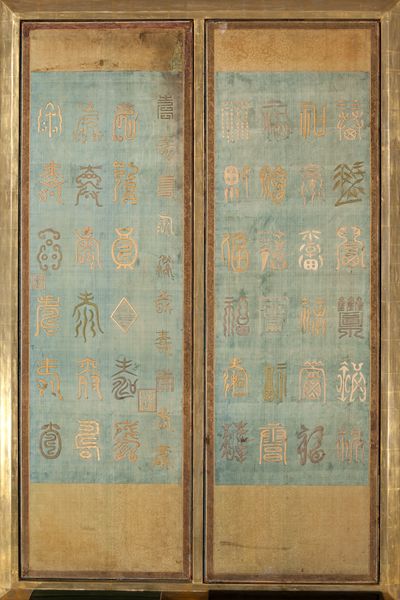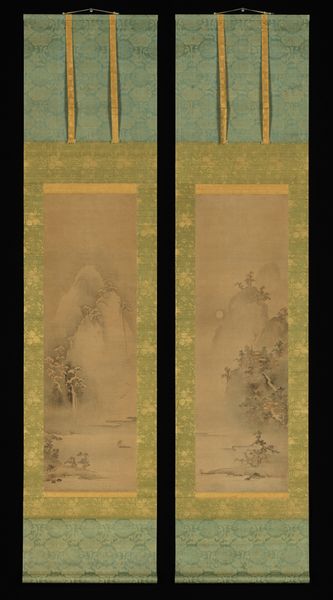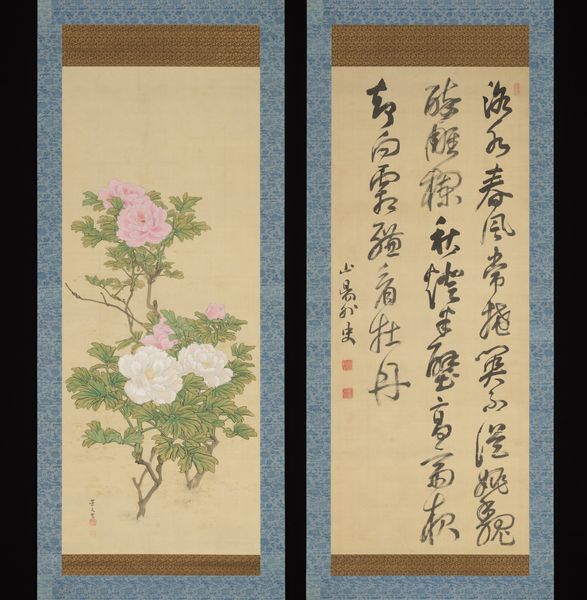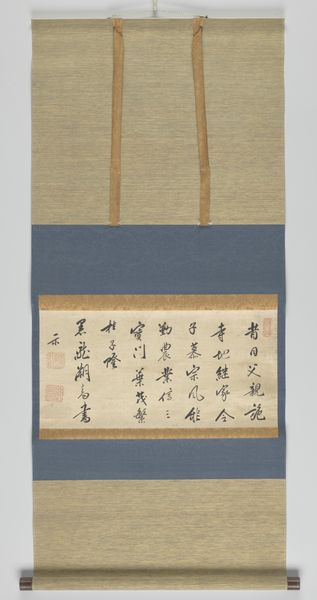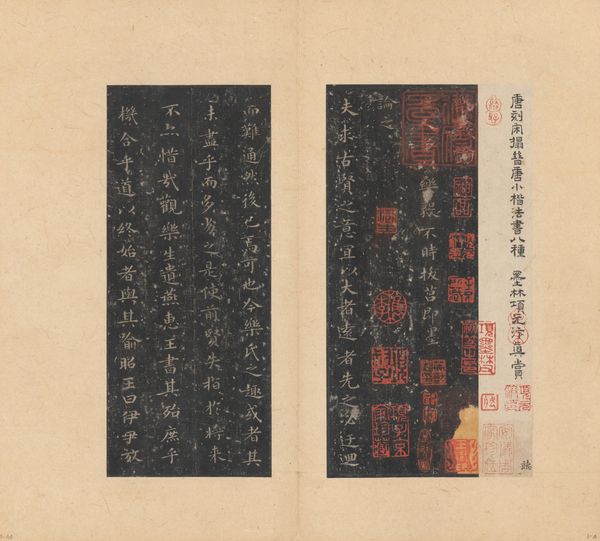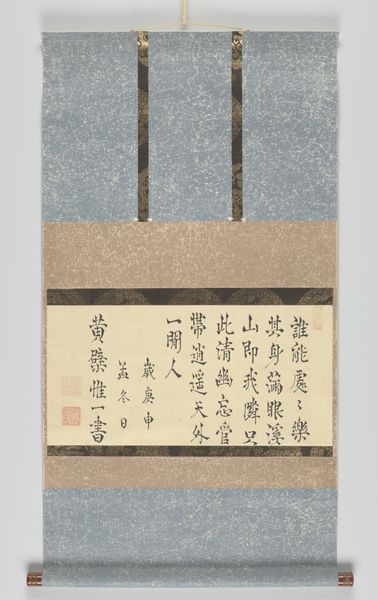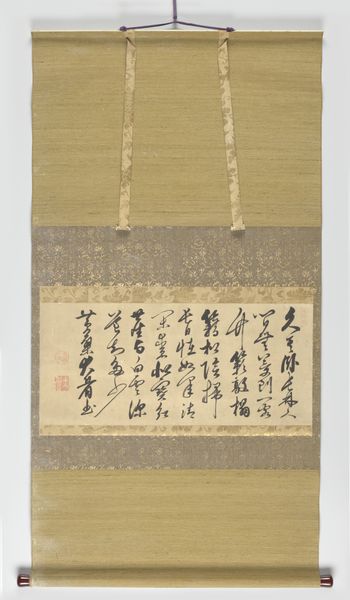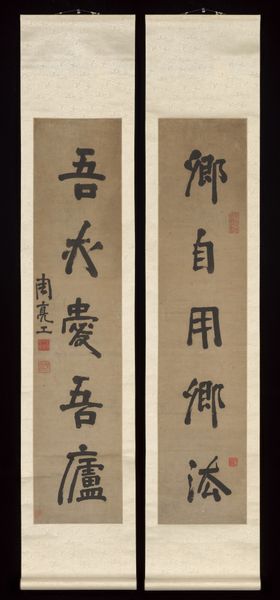
Embroidered Panels with Design of the Chinese Characters for “Longevity” and “Good Fortune” 18th-19th century
0:00
0:00
panel, textile
#
natural stone pattern
#
wood texture
#
toned paper
#
panel
#
water colours
#
pottery
#
textile
#
tile art
#
coffee painting
#
wooden texture
#
watercolour bleed
#
watercolor
Dimensions: 34 3/16 × 12 3/4 in. (86.84 × 32.39 cm) (image)46 3/4 × 14 3/8 in. (118.75 × 36.51 cm) (mount)50 3/4 × 33 5/8 × 1 in. (128.91 × 85.41 × 2.54 cm) (outer frame)
Copyright: Public Domain
Editor: Here we have a set of embroidered panels from the 18th or 19th century, currently housed in the Minneapolis Institute of Art. They're anonymous, but clearly demonstrate an impressive skill in textile work. The soft hues and repeating characters create a sense of meditative calm, almost like a visual mantra. How would you interpret the cultural significance of these panels? Curator: What strikes me is how these panels, embroidered with "Longevity" and "Good Fortune," acted as silent advocates within the domestic sphere. Consider the historical context: Were women involved in their creation? The focus on longevity and good fortune speaks to fundamental human desires, particularly relevant in a society where these things were not always guaranteed, especially for women, isn't it? Editor: Absolutely, and I’m interested in how this textile format allows such sentiments to become embedded within daily life, beyond the typical artwork. It’s almost as if the aspiration becomes material. Curator: Exactly! And how that materiality intersects with gender roles of the time. Embroidery was often a highly valued skill for women, offering a form of creative expression and, perhaps, even agency within a patriarchal structure. Were these panels commissioned by women, or were they made for them? Did this artform function to negotiate a feminine space in the domestic context? Thinking about these intersectional layers provides a deeper understanding, wouldn't you agree? Editor: That makes me rethink them entirely. Now I'm seeing them not just as decorative, but also as complex objects negotiating personal hopes, social expectations, and perhaps, quiet assertions of identity. Curator: Precisely! By recognizing the interplay of these forces, we can better appreciate how artworks, even seemingly simple ones, actively participate in shaping our understanding of the world and ourselves. It's a crucial reminder for our analysis today.
Comments
minneapolisinstituteofart almost 2 years ago
⋮
Each of these six panels features twenty-four Chinese characters, alternating between the characters for “longevity” (壽) and “good fortune” (福). The characters, embroidered in gold thread on a light-blue ground, represent a wide variety of scripts. Some are traditional, while others are less orthodox, including characters whose brushstrokes are formed by stylized bamboo, fish, or birds. These panels—probably from a set of eight or ten panels mounted individually or as a folding screen—would have been used as an auspicious backdrop for a sixtieth birthday celebration. The sixtieth year (called hwangap in Korean), marking one’s survival through a full sexagenary cycle (the twelve-pronged, sixty-year zodiac calendar), receives special commemoration in many cultures within the Chinese cultural sphere, even today.
Join the conversation
Join millions of artists and users on Artera today and experience the ultimate creative platform.
